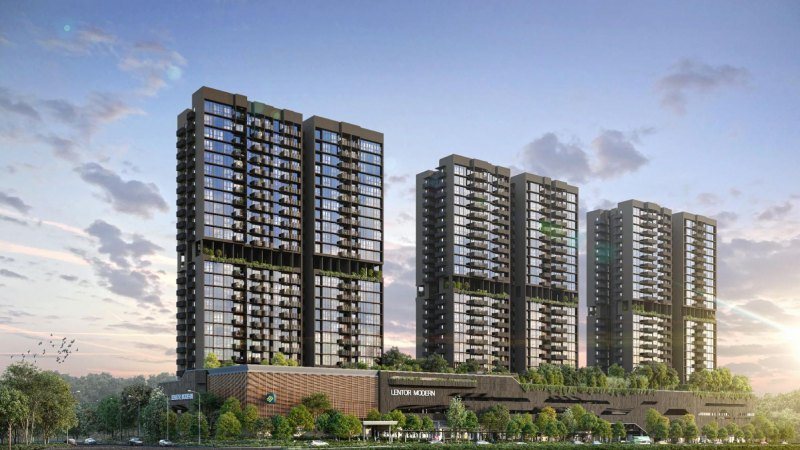
In an era defined by rapid technological advancements and shifting cultural landscapes, the concept of “modern” living has undergone a profound transformation. No longer confined to stark minimalism, modern design now embraces a rich tapestry of influences, prioritizing comfort, functionality, and personal expression. This evolution has given rise to distinct interpretations, such as Springleaf Modern each offering a unique lens through which to view contemporary aesthetics. We’ll delve into these styles, dissecting their core principles and exploring how they resonate with the modern homeowner and design enthusiast.
Springleaf Modern: Embracing Organic Warmth and Natural Harmony
“Springleaf Modern” evokes a sense of renewal and connection to nature. This design philosophy emphasizes organic forms, natural materials, and a warm, inviting color palette. Think of it as a bridge between minimalist clarity and the comforting embrace of the natural world. Light-filled spaces, featuring exposed wood, stone accents, and an abundance of indoor plants, are hallmarks of this style. Springleaf Modern prioritizes sustainability, incorporating eco-friendly materials and energy-efficient solutions. It’s about creating a tranquil sanctuary where the boundaries between indoors and outdoors blur, allowing residents to reconnect with the rhythms of nature.
The Tactile Essence: Materiality in Springleaf Modern
Central to Springleaf Modern is the celebration of materiality. Natural textures are not merely decorative elements but integral to the design’s sensory experience. Untreated wood, linen fabrics, and hand-crafted ceramics contribute to a tactile richness that grounds the space. The emphasis is on authenticity and craftsmanship, favoring pieces that tell a story and reflect the beauty of natural imperfections. This approach fosters a sense of warmth and intimacy, creating spaces that feel lived-in and welcoming rather than sterile and impersonal.
Faber Modern: Precision, Innovation, and Architectural Purity
In contrast to the organic warmth of Faber Modern embodies a more refined and precise aesthetic. This style draws inspiration from mid-century modernism and Bauhaus principles, emphasizing clean lines, geometric forms, and a focus on functionality. Faber Modern is characterized by its architectural purity, where every element is carefully considered and integrated into the overall design. It’s a celebration of innovation and technical prowess, showcasing cutting-edge materials and construction techniques.
The Elegance of Restraint: Minimalism in Faber Modern
Minimalism is a cornerstone of Faber Modern, but it’s not a cold or austere minimalism. Instead, it’s a refined and elegant approach that prioritizes quality over quantity. Spaces are thoughtfully curated, with a focus on essential elements that serve a specific purpose. Clutter is eschewed in favor of clean surfaces and open layouts, creating a sense of spaciousness and tranquility. The color palette is typically neutral, with subtle accents of color used to highlight architectural
Technological Integration: The Future of Faber Modern
Faber Modern embraces technological integration, seamlessly incorporating smart home systems and innovative appliances into the design. This focus on technology enhances both functionality and convenience, allowing residents to control lighting, temperature, and security with ease. The integration of technology is subtle and unobtrusive, seamlessly blending into the overall aesthetic. It’s about creating a living environment that is both beautiful and intelligent, anticipating the needs of modern living.
Bridging the Divide: Finding Common Ground
While Springleaf Modern and Faber Modern may appear to be diametrically opposed, they share a common thread: a commitment to creating thoughtfully designed spaces that enhance the quality of life. Both styles prioritize functionality, comfort, and sustainability, albeit through different means. They both reject unnecessary ornamentation, favoring clean lines and a focus on essential elements. Ultimately, they represent two distinct yet equally valid interpretations of modern living, catering to different preferences and lifestyles.
Personalizing Your Modern Sanctuary: Blending Elements
The beauty of modern design lies in its adaptability. Homeowners are increasingly embracing a hybrid approach, blending elements from both Springleaf Modern and Faber Modern to create personalized sanctuaries that reflect their unique tastes. For example, incorporating natural materials and indoor plants into a Faber Modern space can soften its sharp edges and create a more inviting atmosphere. Conversely, adding sleek, minimalist furniture to a Springleaf Modern interior can introduce a touch of sophistication and balance. The key is to find a harmonious blend that resonates with your personal style and creates a living environment that feels both comfortable and inspiring.
The Evolving Landscape of Modern Design: Looking Ahead
The landscape of modern design is constantly evolving, driven by technological advancements, shifting cultural values, and a growing awareness of environmental sustainability. As we move forward, we can expect to see even more innovative and diverse interpretations of modern living. Springleaf Modern and Faber Modern represent two significant currents in this ongoing evolution, offering valuable insights into the future of design. By understanding their core principles and exploring their potential for integration, we can create living spaces that are not only beautiful and functional but also deeply personal and meaningful.
Conclusion
In conclusion, “Springleaf Modern” and “Faber Modern” are not mutually exclusive entities but rather complementary facets of a broader tapestry of modern design. While Springleaf Modern celebrates the beauty of nature and the warmth of organic materials, Faber Modern embraces precision, innovation, and architectural purity. Both styles offer valuable lessons in creating thoughtful and functional living spaces that reflect the evolving needs and aspirations of modern life. By embracing the best of both worlds, we can create homes that are not only aesthetically pleasing but also deeply personal and truly reflective of our individual styles and values. Ultimately, the essence of modern living lies in creating spaces that inspire, comfort, and nurture, allowing us to thrive in an ever-changing world.